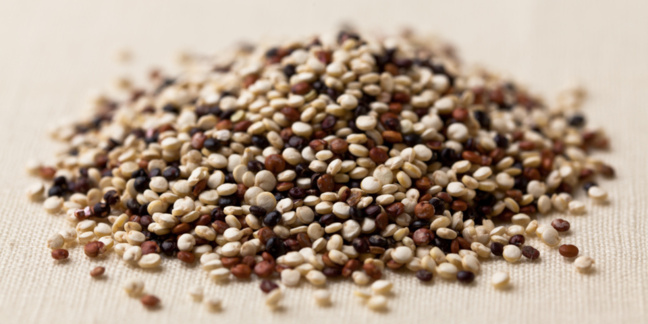
Cultivated for over 7,000 years in the elevated Inca plateaus, quinoa is a traditional food staple of Bolivia and Peru, the world’s two largest producers of the now coveted crop. According to FAO statistics, these two countries produce 92% of the world’s quinoa. In Bolivia, quinoa plantations now cover 70 000 hectares, producing over 44 000 tons a year. While quinoa agriculture is spreading like wildfire across Bolivia’s desert plains, its consumption is being displaced farther away from its origins.
This “grain of gold”, whose global demand and price rise constantly, is both a treasure and a trap for Bolivians.
A few decades ago, NASA scientists stumbled across the miraculous “lost grain” while in search of food adequate for long space missions. Today, due to rising health and nutrition concerns in wealthy countries, quinoa has become the holy grail of grains. Two thirds of quinoa produced in Bolivia is now exported globally, of which 54% goes to the United States, 32% to Europe, and 6% to Canada. Europe consumes about 5,000 tonnes per year, 25 times less than the US. Since 2005, quinoa has doubled in production as well as price: its price now oscillates between $2,500 and $3,000 a tonne.
According to indigenous president Morales, once a young quinoa cultivator, this growing fad is a golden ticket to a booming national economy. “In the midst of this global food crisis, the Andean people possess multiple solutions, one of them being quinoa,” he declared to the FAO tribune. Indeed, the growth in quinoa agriculture has helped raise farmers’ revenues in one of the poorest regions in the world. While many Bolivians had been forced to find work in Argentina or Chile, nowadays the nation’s city folk are migrating back to the countryside to jump on the quinoa bandwagon.
Yet, at a local level, few profit at the expense of many.
While the price of quinoa has tripled the last five years, its consumption in Bolivia has diminished by a third. In a country already struggling with problems of malnutrition, this development presents a tragic dilemma. Bolivians can no longer afford their traditional staple, now considered a luxury, and are quickly adopting a fat- and sugar-heavy American diet of imported processed foods.
Furthermore, because legislation hasn’t been able to catch up with this rapid growth, a lack of precise land boundaries is causing violent conflicts between farmers. March and April 2012 saw more than thirty injuries resulting from conflicts.
This economic fortune comes at the high price of rising malnutrition and social tensions. Bolivia had best tighten its belt before this quinoa rush spirals out of control.
This “grain of gold”, whose global demand and price rise constantly, is both a treasure and a trap for Bolivians.
A few decades ago, NASA scientists stumbled across the miraculous “lost grain” while in search of food adequate for long space missions. Today, due to rising health and nutrition concerns in wealthy countries, quinoa has become the holy grail of grains. Two thirds of quinoa produced in Bolivia is now exported globally, of which 54% goes to the United States, 32% to Europe, and 6% to Canada. Europe consumes about 5,000 tonnes per year, 25 times less than the US. Since 2005, quinoa has doubled in production as well as price: its price now oscillates between $2,500 and $3,000 a tonne.
According to indigenous president Morales, once a young quinoa cultivator, this growing fad is a golden ticket to a booming national economy. “In the midst of this global food crisis, the Andean people possess multiple solutions, one of them being quinoa,” he declared to the FAO tribune. Indeed, the growth in quinoa agriculture has helped raise farmers’ revenues in one of the poorest regions in the world. While many Bolivians had been forced to find work in Argentina or Chile, nowadays the nation’s city folk are migrating back to the countryside to jump on the quinoa bandwagon.
Yet, at a local level, few profit at the expense of many.
While the price of quinoa has tripled the last five years, its consumption in Bolivia has diminished by a third. In a country already struggling with problems of malnutrition, this development presents a tragic dilemma. Bolivians can no longer afford their traditional staple, now considered a luxury, and are quickly adopting a fat- and sugar-heavy American diet of imported processed foods.
Furthermore, because legislation hasn’t been able to catch up with this rapid growth, a lack of precise land boundaries is causing violent conflicts between farmers. March and April 2012 saw more than thirty injuries resulting from conflicts.
This economic fortune comes at the high price of rising malnutrition and social tensions. Bolivia had best tighten its belt before this quinoa rush spirals out of control.




























